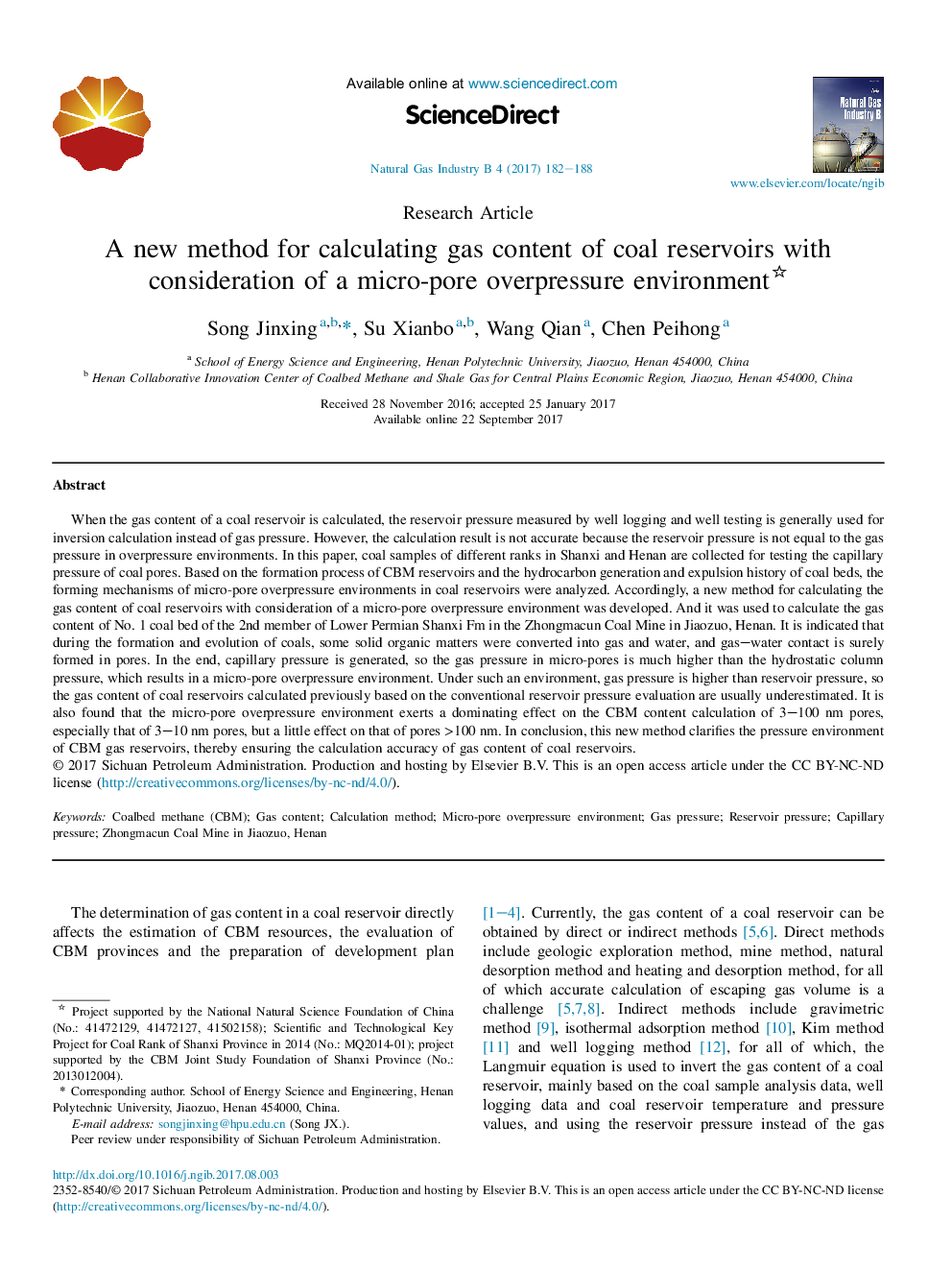| Article ID | Journal | Published Year | Pages | File Type |
|---|---|---|---|---|
| 8109729 | Natural Gas Industry B | 2017 | 7 Pages |
Abstract
When the gas content of a coal reservoir is calculated, the reservoir pressure measured by well logging and well testing is generally used for inversion calculation instead of gas pressure. However, the calculation result is not accurate because the reservoir pressure is not equal to the gas pressure in overpressure environments. In this paper, coal samples of different ranks in Shanxi and Henan are collected for testing the capillary pressure of coal pores. Based on the formation process of CBM reservoirs and the hydrocarbon generation and expulsion history of coal beds, the forming mechanisms of micro-pore overpressure environments in coal reservoirs were analyzed. Accordingly, a new method for calculating the gas content of coal reservoirs with consideration of a micro-pore overpressure environment was developed. And it was used to calculate the gas content of No. 1 coal bed of the 2nd member of Lower Permian Shanxi Fm in the Zhongmacun Coal Mine in Jiaozuo, Henan. It is indicated that during the formation and evolution of coals, some solid organic matters were converted into gas and water, and gas-water contact is surely formed in pores. In the end, capillary pressure is generated, so the gas pressure in micro-pores is much higher than the hydrostatic column pressure, which results in a micro-pore overpressure environment. Under such an environment, gas pressure is higher than reservoir pressure, so the gas content of coal reservoirs calculated previously based on the conventional reservoir pressure evaluation are usually underestimated. It is also found that the micro-pore overpressure environment exerts a dominating effect on the CBM content calculation of 3-100Â nm pores, especially that of 3-10Â nm pores, but a little effect on that of pores >100Â nm. In conclusion, this new method clarifies the pressure environment of CBM gas reservoirs, thereby ensuring the calculation accuracy of gas content of coal reservoirs.
Keywords
Related Topics
Physical Sciences and Engineering
Energy
Energy Engineering and Power Technology
Authors
Jinxing Song, Xianbo Su, Qian Wang, Peihong Chen,
